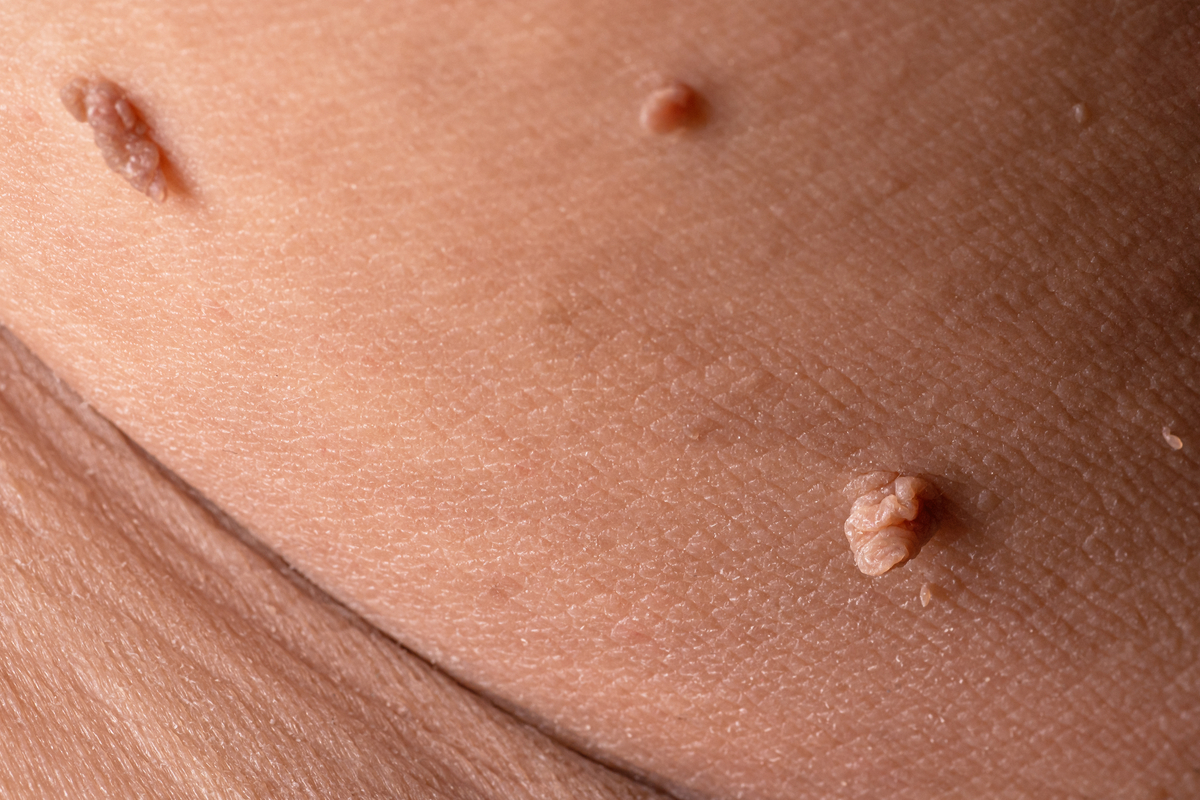Skin tags are a nuisance no matter how you roll the dice. What purpose do they really serve other than an eyesore on your body? This is the very reason as to why skin tags are something that is sought to be removed if and when possible. As they pose no real medical threat, it is typically considered a cosmetic issue which is the likely culprit as to the expensive nature it is to have them removed in a medical setting.
What Are Skin Tags?
While they are a rather unsightly cluster of skin cells appearing on your body, skin tags are fortunately non-invasive and are harmless to your health. Referred to as a “benign tumor on the skin,” they typically do not cause any pain, more so just discomfort depending upon where they are located. Many times, you will not even realize that they are there. Affecting just about anyone, they do tend to be genetic and get passed down through family genes. They can vary in size, color, and appearance from darker tones to lighter. Typically starting off small, they can remain that way or grow to up to 2 inches in width.
Where Do They Typically Appear?
Rearing their unattractive faces just about anywhere on your body, they typically will appear in certain areas of high friction. Unbiased in whom they wish to grace with their presence, both men and women are susceptible to having skin tags. Oftentimes, they are small and are not felt or even seen. But, if you happen to notice one, here are some of the most frequent areas in which they exist on the body:
Neck – whether on the sides or in the folds of your neck, they can be tiny or larger, more noticeable ones
Underarms – A likely place to find them hiding if you are prone to skin tags
Eyelids – On the eyelids is a common place for skin tags, and though they again are not harmful, they can be quite irritating if they appear on a part of the lid that either obstructs your vision or makes it difficult to blink.
Upper Chest – You may notice them forming at the top of your chest area, seemingly in a more rounded fashion
Groin – Affecting men, skin tags can be anywhere in the groin region
Under the Breasts – Most likely detectable by touch, they can form under the folds of breasts.

The Difference Between a Mole and a Skin Tag
A mole’s composition is similar to that of a skin tag in that it is “skin growth made up of cells that produce color” or pigment. They are likewise also completely harmless in nature, the only issue is their unsightliness.
While they are in a general sense harmless, if you believe that a mole looks a bit questionable in nature in terms of growth and size it would be well advised to check with your doctor to ensure it is not cancerous in any way.
Moles can sometimes be confused with melanoma, otherwise known as skin cancer. Your doctor may perform what is known as a biopsy where a portion of the cells from the mole gets sent to a lab to confirm or deny the existence of cancer cells. Moles tend to be darker in pigmentation while skin tags have a neck or a base at the end which can be easier to remove.
Why Is Skin Tag Removal So Expensive?
Since they are harmless, the main reason why you would want to remove them is for aesthetic reasons. If done in a doctor’s office, it would be considered a cosmetic procedure which is generally not covered by insurance. There are generally 3 ways in which the doctor is going to remove your skin tag in an office setting:
Freezing – This process is usually done using liquid nitrogen which is an excessively cold liquid version of nitrogen which is typically kept at a -380 Fahrenheit temperature. The physician or medical professional will dab a small amount onto the skin tag, where it will freeze and fall off on its own over the course of a few days. The skin surrounding the skin tag may be red or blister, much like frostbite, but it will also heal on its own. No numbing is needed as the liquid nitrogen’s cooling effect just offers a slight burn or tingle sensation. For small to medium-sized skin tags, this is the easiest form of removal in a doctor’s office.
Burning – Also referred to as cauterizing, “your skin tag will be burned off with a cautery, causing the skin tag to fall off while sealing the wound to prevent infection or bleeding.” A cautery sends a strong electrical current through the stem of the skin tag, which affects only the skin tag thus preventing injury or bleeding to any other parts of the skin. The skin tag will be removed immediately and there is little to no wound needing to be healed. This technique can be on the painful side depending on how large a skin tag you are having removed.
Cutting – This technique is quite literally cutting the skin tag off with a scalpel or surgical scissors. Sometimes a topical numbing cream or shot is used to alleviate the pain depending on the size of the skin tag Also depending on how large the skin tag is, stitches may be required.
Ligation – A much slower process and not as widely used, this technique entails a suture is tied around the base of the skin tag, thus effectively cutting off blood flow to the skin tag where it will come off. Of the 4 options, this is likely the only option that could be a viable at-home treatment, depending on the size of your skin tag. It does go without saying that you should proceed with caution and consult a medical professional.
These techniques should only be done in a medical office and are not advised as a home treatment. Attempting any of these at home could result in severe infection thus causing more issues than the skin tag itself. If your skin tag is sent to a lab for analysis for any reason, that may be the instance where the removal can be covered by your insurance and therefore not cost you anything out of pocket. Otherwise, the above procedures can be considered minor cosmetic surgeries which can be costly.
In a medical office setting, any procedure which can be interpreted as a cause for medical concern or potential health issue will likely be covered by your insurance, therefore costing little to nothing out of pocket to you. When dealing with anything having to do with personal aesthetic preferences however is when having even a minor skin tag removal process can get costly.

Alternative Removal Processes
While there are many options for removal in a medical setting, those options are not always the most affordable. Being considered a cosmetic procedure causes some compilations when it comes to insurance coverage. Additionally, the methods used in a physician’s office are not going to be without any pain. Homeopathic home remedies are available and depending on how large or small your skin tags are, it could be the most affordable and easiest option for removal.
At-home skin tag removal products will work to essentially dry out the skin tag, where it will eventually fall off on its own in anywhere from 7 to 10 days’ time. As such, ensure that you do not over apply or put it on varying parts of the skin will prevent any potential reactions. Directions should be followed exactly as to ensure your skin tags will be removed properly with care.
At-home treatments offer a great alternative to a visit to the doctor’s office. Such treatments should be done with proper purchased treatments, rather than attempting to take matters into your own hands with nail clippers or scissors.
Although these skin tags may not feel like they can be painful when removed on your own, the main concern would be bleeding, creating an open wound thus allowing infection to set in and resulting in scarring. The larger the skin tag, the more attached it is to your skin, so no matter what treatment you decide whether it be at home or in a doctor’s office, you should always proceed with caution and ensure that you will not be in more pain or have it be more aesthetically unappealing as a result of the removal process.
The good thing to note is that there are many options available to you if your desire is to have your skin be blemish-free and smooth. Be mindful that sometimes the skin tags are just a tad too small to see or get off fully depending on the treatment so you may require multiple applications or procedures in order to remove it completely or it may not even come off as cleanly as you would prefer.
